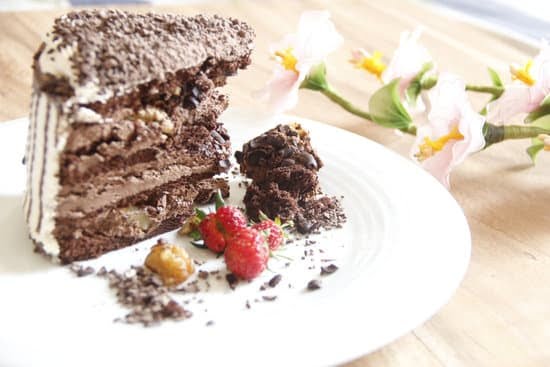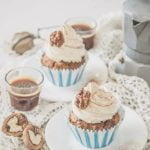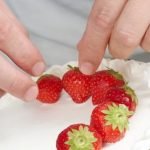Are you interested in learning how to decorate dummy cakes? Whether you are a professional baker, a cake decorator, or just someone with a love for beautiful pastries, decorating dummy cakes can be a creative and fulfilling experience. In this article, we will guide you through the process of choosing the right dummy cake, preparing it for decoration, finding design inspiration, and providing you with essential tools and materials needed for this project.
When it comes to choosing the right dummy cake, there are various types and sizes to consider. From round to square, tiered to sheet cakes, the options are endless. Each type of dummy cake offers its unique set of opportunities for creativity and challenges when it comes to decorating. Therefore, understanding the different types and sizes of dummy cakes available is essential before diving into the world of decoration.
We will provide you with tips on priming and prepping your chosen dummy cake for decoration as well as explore diverse cake decorating styles and themes that can inspire your creativity. Additionally, we will offer guidance on essential tools and materials required for decorating a dummy cake so that you are fully equipped to bring your ideas to life.
So whether you are a beginner or an experienced decorator looking for new techniques and inspiration, this article has got you covered.
Preparing the Dummy Cake
When it comes to decorating a dummy cake, proper preparation is key to creating a stunning finished product. Whether you are using a styrofoam or plastic dummy cake, there are some important steps to take before you can start adding the decorative elements. From priming the surface to smoothing out any imperfections, here are some tips for getting your dummy cake ready for decoration.
Choosing the Right Primer
Before you can begin decorating your dummy cake, it’s important to apply a primer to the surface. This will help create a smooth and even base for your decoration. When choosing a primer, opt for one that is specifically designed for use on styrofoam or plastic surfaces. After applying the primer, allow it to dry completely before moving on to the next step.
Smoothing Out Imperfections
Once the primer has dried, it’s time to inspect the surface of your dummy cake for any imperfections. Use sandpaper or a fine-grit file to smooth out any rough spots or uneven areas. Pay close attention to the edges and corners of the cake, as these are often areas where imperfections may be more noticeable once decorations are added.
Creating a Level Surface
To ensure that your decorations go on smoothly and evenly, it’s important to create a level surface on your dummy cake. Use a ruler or level to check that the top of the cake is flat and even. If necessary, use additional layers of primer or filler to build up any areas that need extra attention. By taking this time-consuming step at the beginning of your decorating process, you’ll save yourself frustration and potential rework later on.
By following these tips for priming and prepping your dummy cake, you’ll be well on your way to creating a beautifully decorated masterpiece. With a smooth and level surface as your starting point, you can let your creativity shine as you add all of the finishing touches that will truly make your dummy cake stand out.
Design Inspiration
When it comes to designing a dummy cake, the possibilities are endless. Whether you’re looking for a classic and elegant design or something more whimsical and fun, there are countless cake decorating styles and themes to consider. Here are just a few ideas to get your creative juices flowing:
Traditional Elegance
For a timeless and sophisticated look, consider traditional cake decorating styles such as intricate piping, delicate sugar flowers, and elegant fondant draping. Classic color palettes like white, ivory, and pastel shades can lend an air of timelessness to your dummy cake.
Modern Minimalism
On the other end of the spectrum, minimalist designs featuring clean lines, geometric shapes, and bold colors can offer a sleek and contemporary aesthetic. Consider using fondant accents in vibrant hues or metallic finishes for a modern twist on traditional cake decorating.
Whimsical Themes
If you’re creating a dummy cake for a themed event or celebration, let your imagination run wild with whimsical designs. From fairy-tale castles to tropical paradise scenes, there are endless possibilities for bringing a playful and imaginative theme to life on your dummy cake.
Exploring different cake decorating styles and themes is not only fun but also allows you to hone your skills as a decorator. By experimenting with various looks and techniques, you can expand your repertoire and create stunning designs that will impress any audience. Keep in mind that the key to successful decoration is practice – so don’t be afraid to get creative.
Essential Tools and Materials
When it comes to decorating a dummy cake, having the proper tools and materials at your disposal is essential for achieving a professional-looking result. Whether you’re a beginner or an experienced decorator, having the right supplies can make all the difference in creating a stunning design. Here is a comprehensive list of supplies needed for decorating a dummy cake:
- Dummy cake in desired shape and size
- Cake board or stand
- Fondant or gum paste in various colors
- Rolling pin
- Modeling tools for shaping and detailing
- Edible glue or royal icing for adhering decorations
- Piping bags and tips for intricate designs
- Food coloring in various shades
- Paintbrushes for applying edible paint or luster dust
- Embellishments such as edible pearls, flowers, or sprinkles
In addition to the items listed above, it’s also important to have a clean work surface, good lighting, and patience when working on decorating a dummy cake. These basic supplies will provide you with everything you need to begin transforming your plain dummy cake into a beautiful work of art.
Lastly, don’t forget to consider any specific decorations or themes you may want to incorporate into your design. For example, if you’re creating a wedding dummy cake, you may need items such as lace molds, edible gold leaf, or romantic figurines. Tailoring your supply list to fit your specific project will ensure that you have everything necessary to bring your vision to life.
Step-by-Step Tutorial
Decorating a dummy cake can be just as fun and creative as decorating a real cake, but without the pressure of time constraints or worrying about the cake being edible. Whether you’re a professional baker looking to showcase your skills or a hobbyist wanting to create beautiful centerpiece for an event, learning how to decorate a dummy cake can be a valuable skill.
In this section, we will provide you with detailed instructions on how to create stunning decorations on a dummy cake that will wow anyone who sees it.
First, before you begin decorating your dummy cake, it’s important to choose the right type and size. Foam dummy cakes come in various shapes and sizes, so pick one that fits your desired design and theme. Once you have selected the perfect dummy cake, it’s time to prepare it for decoration. Start by priming the surface with a layer of royal icing or buttercream to ensure that the fondant or icing adheres properly.
Now comes the fun part – designing and decorating your dummy cake. There are countless styles and themes to choose from, whether you want to create a whimsical fairy-tale castle or an elegant floral masterpiece.
From using fondant to creating intricate piping designs, the possibilities are endless when it comes to decorating techniques for dummy cakes. With the right tools and materials at hand, such as fondant rollers, cutters, edible glitter, and food coloring gels, you can bring your vision to life with ease.
In this step-by-step tutorial section, we will walk you through the process of creating stunning decorations on a dummy cake, from covering it with fondant to adding intricate details like sugar flowers or hand-painted designs. By following our detailed instructions and tips, you’ll be able to elevate your dummy cake decorating skills and create a show-stopping centerpiece for any occasion.
| Decorating Tips | Supplies |
|---|---|
| Choose the right type and size of foam dummy cake | Royal icing or buttercream |
| Explore different styles and themes for design inspiration | Fondant rollers and cutters |
| Create stunning decorations with fondant or piping techniques | Edible glitter and food coloring gels |
Finishing Touches
When it comes to decorating a dummy cake, adding the finishing touches is what truly brings the whole design together. Whether you are going for a simple and elegant look or a more elaborate and intricate design, the final details and embellishments can make all the difference in making your dummy cake truly pop. Here are some tips and ideas for achieving that stunning final touch:
- Choose the right color scheme: Consider the color palette of your overall design and select final details and embellishments that complement and enhance the existing colors.
- Add texture and dimension: Incorporate elements like edible pearls, fondant flowers, or piped frosting designs to create depth and visual interest on your dummy cake.
- Consider edible decorations: Edible gold leaf, shimmer dust, or edible glitter can add a touch of glamour and sophistication to your dummy cake design.
In addition to these tips, it’s important to remember that less is often more when it comes to adding final details to a dummy cake. It’s easy to go overboard with decorations, which can overwhelm the overall design. Instead, focus on strategically placing final details where they will have the most impact.
Finally, don’t forget about the base of your dummy cake. Adding a decorative ribbon around the base or placing the cake on a stylish cake stand can elevate the entire presentation.
Overall, adding final details and embellishments to your decorated dummy cake requires attention to detail, creativity, and a keen eye for balance and harmony within the overall design.
Now that you know how essential those final touches are for making your dummy cake stand out, it’s time to put this knowledge into practice as we move onto creating those stunning decorations step by step.
Troubleshooting
Decorating a dummy cake can be a fun and creative process, but it also comes with its fair share of challenges. From unexpected mishaps to dealing with difficult materials, troubleshooting is an essential skill for any cake decorator. In this section, we will explore some common decorating challenges and provide practical solutions for overcoming them.
One common issue when decorating a dummy cake is dealing with fondant that is too dry or too sticky. If your fondant is dry and cracking, try kneading in a small amount of vegetable shortening to soften it up. On the other hand, if your fondant is overly sticky and difficult to work with, dust your work surface and rolling pin with cornstarch to prevent sticking as you roll out the fondant.
Another frequent problem faced by decorators is air bubbles forming beneath the fondant while covering the dummy cake. To prevent this, make sure to smooth out the fondant as you apply it, starting from the center and working your way outwards. You can also use a small pin to gently prick any air bubbles and smooth them out before they become more noticeable.
Lastly, achieving sharp edges on a dummy cake can be challenging, especially when using buttercream or ganache as the base for decoration. To create crisp edges, invest in a good quality bench scraper or offset spatula for smoothing out the icing. A hot knife can also be used to melt and smooth any uneven areas of buttercream or ganache.
Overall, knowing how to troubleshoot common decorating challenges will help you create a beautifully decorated dummy cake with ease.
| Common Decorating Challenges | Solutions |
|---|---|
| Dry or sticky fondant | Knead in small amount of vegetable shortening for dry fondant; Dust work surface with cornstarch for sticky fondant |
| Air bubbles under fondant | Smooth out fondant as it’s applied; Use small pin to prick and smooth out air bubbles |
| Achieving sharp edges | Use bench scraper or offset spatula for smoothing buttercream or ganache; Utilize hot knife to melt and smooth uneven areas |
Displaying Your Masterpiece
In conclusion, decorating a dummy cake can be a fun and creative process that allows you to showcase your skills and artistic flair. Whether you’re a professional baker looking to display your work or a hobbyist seeking to create stunning decorations for special occasions, knowing how to decorate dummy cakes is a valuable skill.
By following the step-by-step tutorial and utilizing the essential tools and materials listed, you can transform a basic dummy cake into a visually striking masterpiece that is sure to impress.
Once you have completed decorating your dummy cake, it’s important to consider how best to display and preserve your creation for long-term use or display. Utilizing the tips provided in this section, such as using a sturdy cake stand or covering the cake with a clear acrylic dome, will help ensure that your decorated dummy cake remains in pristine condition for as long as possible.
By taking these extra steps, you can proudly showcase your masterpiece in various settings, whether it’s at weddings, events, or as part of a professional portfolio.
In summary, learning how to decorate dummy cakes opens up a world of creative possibilities and allows you to experiment with different design styles and themes. With the right tools, preparation, and attention to detail, you can create stunning decorations that rival real cakes in appearance. So go ahead and unleash your creativity by exploring different design inspirations and experimenting with various techniques – the only limit is your imagination.
Frequently Asked Questions
What Do You Use to Decorate a Fake Cake?
Fake cakes are typically decorated using materials such as foam or styrofoam for the base, which can be shaped and covered with fondant or royal icing to create a realistic appearance. Decorative elements like artificial flowers, ribbons, and edible pearls can also be used to enhance the faux cake’s appearance.
How to Decorate Dummy Cake With Buttercream?
Decorating a dummy cake with buttercream involves using a technique called “buttercream transfer” where the design is piped onto wax paper, frozen, and then transferred onto the cake. This method allows for intricate designs to be created on a fake cake without actually applying buttercream directly to it.
How Far in Advance Can You Decorate a Dummy Cake?
Dummy cakes can be decorated far in advance since they do not spoil like real cakes. As long as the materials used for decoration are non-perishable, a dummy cake can be decorated weeks or even months ahead of when it will be displayed or used for an event. This flexibility makes them convenient for pre-planning events and occasions.

Welcome to our cake decorating blog! My name is Destiny Flores, and I am the proud owner of a cake decorating business named Cake Karma. Our mission is to provide delicious, beautiful cakes for all occasions. We specialize in creating custom cakes that are tailored specifically to each customer’s individual needs and tastes.





